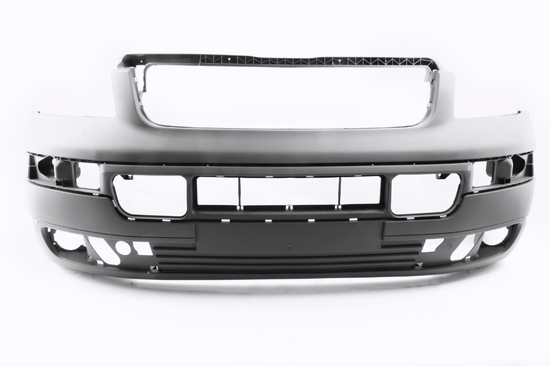
Properties and Overview of PP (Polypropylene)
Overview:
 PP (Polypropylene) is a lightweight, durable thermoplastic polymer known for its excellent chemical resistance, versatility, and affordability. As one of the most widely used plastics in the world, PP plays a critical role in numerous industries, from packaging and automotive to textiles and consumer goods. Its mechanical strength, flexibility, and resistance to moisture and chemicals make it indispensable in modern manufacturing.
PP (Polypropylene) is a lightweight, durable thermoplastic polymer known for its excellent chemical resistance, versatility, and affordability. As one of the most widely used plastics in the world, PP plays a critical role in numerous industries, from packaging and automotive to textiles and consumer goods. Its mechanical strength, flexibility, and resistance to moisture and chemicals make it indispensable in modern manufacturing.
Production:
The production of polypropylene involves the polymerization of propylene monomers using catalysts, typically through processes such as Ziegler-Natta or metallocene catalysis. Depending on the intended application, the resulting polymer can be tailored into different grades, including homopolymers and copolymers. PP is easily processed using various techniques, including injection molding, extrusion, and blow molding, allowing manufacturers to create various shapes and forms. Its recyclability further enhances its value, making it a sustainable option for many applications.
Applications:
Polypropylene's applications are vast due to its unique properties. In the packaging industry, it is used for food containers, bottles, and films, providing a moisture barrier and maintaining durability under stress. In the automotive sector, PP is employed for interior trims, battery cases, and bumpers, where its impact resistance and lightweight nature contribute to fuel efficiency and cost savings. The textile industry uses PP for nonwoven fabrics, ropes, and carpets, benefiting from its flexibility and resistance to wear. Additionally, PP is found in household products like storage containers, kitchen utensils, and furniture due to its toughness and ease of molding. Its use extends to medical applications, such as syringes and surgical trays, thanks to its ability to withstand sterilization.
Summary:
Polypropylene is a versatile and economical polymer that meets the demands of various industries. Its durability, chemical resistance, and adaptability make it a reliable choice for everyday products and specialized industrial applications. As industries seek sustainable and high-performance materials, PP remains vital in modern manufacturing, driving innovation and efficiency across diverse sectors. Its enduring importance ensures its place as a cornerstone material in global production.
See a comprehensive list of electrical, mechanical, physical and thermal properties for PP (Polypropylene) below:
Electrical Properties of PP (Polypropylene)
| Electrical Property (Units) | Value |
|---|---|
| PP (Polypropylene) Dielectric Constant at 'Standard Temperature and Pressure' | 2.0 to 2.2 |
| PP (Polypropylene) Electrical Breakdown Voltage at Atmospheric Pressure (kV/mm) | ~20 to 30 |
| PP (Polypropylene) Electrical Conductivity (S/m) | 1.00E-18 to 1.00E-16 |
| PP (Polypropylene) Electrical Resistivity at Room Temperature (25°C) (Ω·m) | 1.00E+16 to 1.00E+18 |
| PP (Polypropylene) Magnetic Property | N/A |
| PP (Polypropylene) Superconducting Transition Temperature (K) | N/A |
| PP (Polypropylene) Temperature Coefficient of Resistance (°C⁻¹) | Unknown |
Unfamiliar with a property? Click it's description to be given a full definition in the GLOSSARY
See properties and overview for
ALLOYS and CHEMICAL ELEMENTS
popular in engineering
Require different units not displayed?
CONVERT VARIOUS UNITS HERE
Mechanical Properties of PP (Polypropylene)
Unfamiliar with a property? Click it's description to be given a full definition in the GLOSSARY
See properties and overview for
ALLOYS and CHEMICAL ELEMENTS
popular in engineering
Require different units not displayed?
CONVERT VARIOUS UNITS HERE
Physical Properties of PP (Polypropylene)
| Physical Property (Units) | Value |
|---|---|
| PP (Polypropylene) Boiling Point at Atmospheric Pressure (°C) | Decomposes |
| PP (Polypropylene) Chemical Composition (Element %) | (C3H6)n |
| PP (Polypropylene) Cost ($/kg) | 1 to 1.5 |
| PP (Polypropylene) Density at 'Standard Temperature and Pressure' (kg/m3) | 900 to 920 |
| PP (Polypropylene) Glass Transition Temperature at Atmospheric Pressure (°C) | -10 |
| PP (Polypropylene) Melting Point at Atmospheric Pressure (°C) | 160 |
| PP (Polypropylene) Polymer Family | Thermoplastic |
| PP (Polypropylene) Refractive Index | 1.49 |
| PP (Polypropylene) Specific Gravity | 0.90 to 0.92 |
| PP (Polypropylene) Viscosity at Melting Point (mPa·s) | Unknown |
Unfamiliar with a property? Click it's description to be given a full definition in the GLOSSARY
See properties and overview for
ALLOYS and CHEMICAL ELEMENTS
popular in engineering
Require different units not displayed?
CONVERT VARIOUS UNITS HERE
Thermal Properties of PP (Polypropylene)
| Thermal Property (Units) | Value |
|---|---|
| PP (Polypropylene) Coefficient of Thermal Expansion (µm/m·K) | 100 to 200 |
| PP (Polypropylene) Emissivity Coefficient | 0.9 |
| PP (Polypropylene) Specific Heat Capacity (J/kg·K) | 1920 |
| PP (Polypropylene) Thermal Conductivity (W/m.K) | 0.1 |
| PP (Polypropylene) Thermal Conductivity (BTU/h·ft·°F) | 0.06 |
Unfamiliar with a property? Click it's description to be given a full definition in the GLOSSARY
See properties and overview for
ALLOYS and CHEMICAL ELEMENTS
popular in engineering
Require different units not displayed?
CONVERT VARIOUS UNITS HERE
 ADDED TO MY FAVORITES!
ADDED TO MY FAVORITES! REMOVED FROM MY FAVORITES!
REMOVED FROM MY FAVORITES!